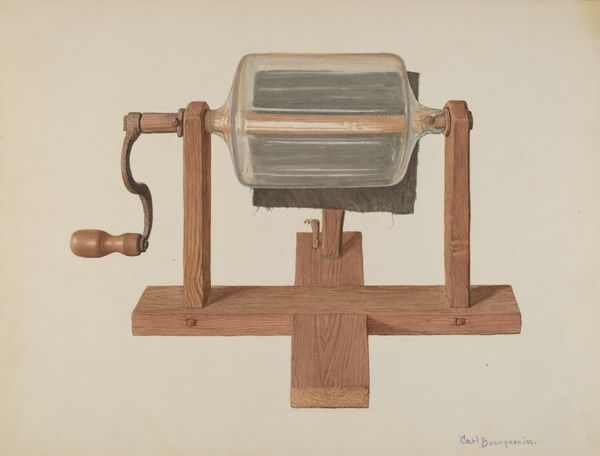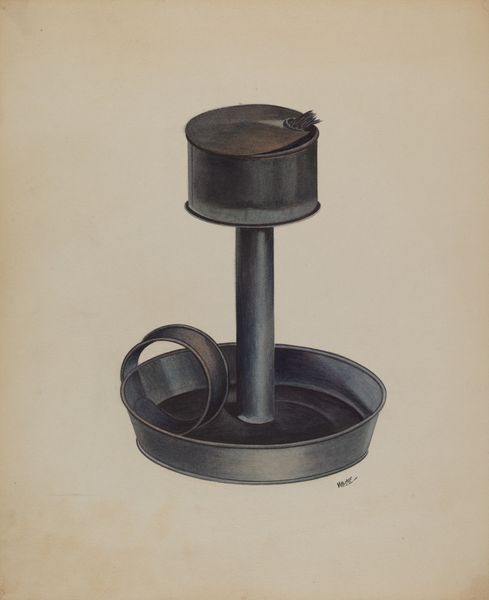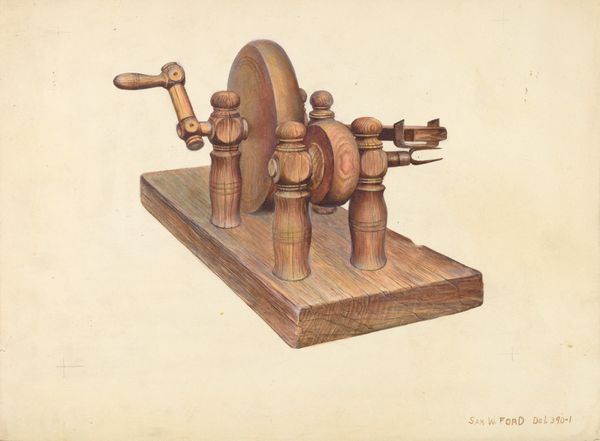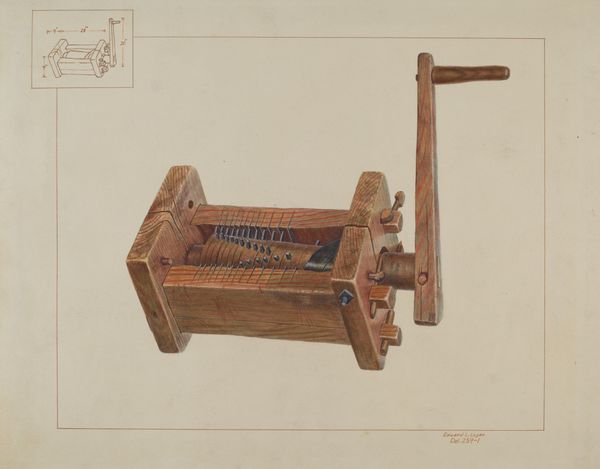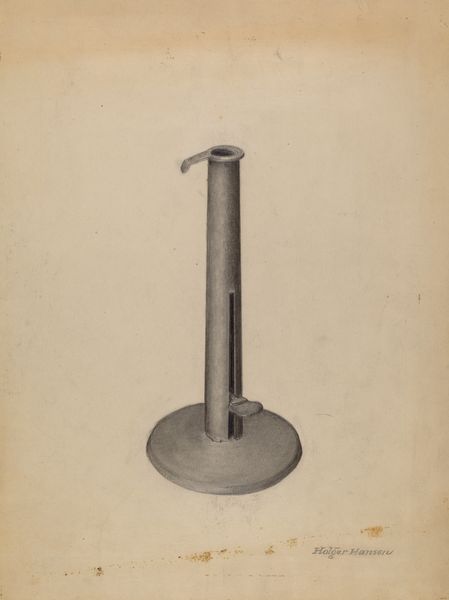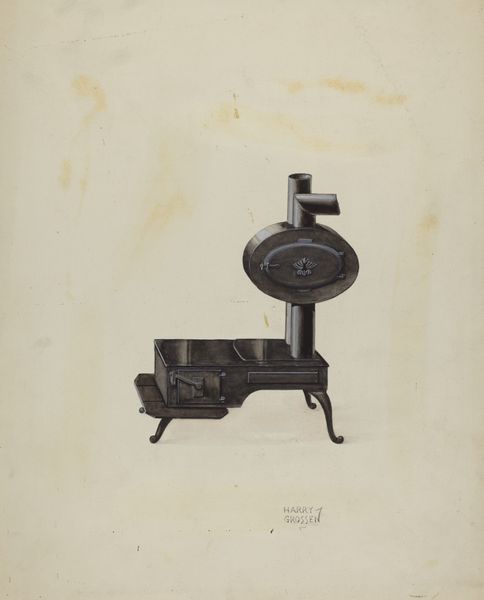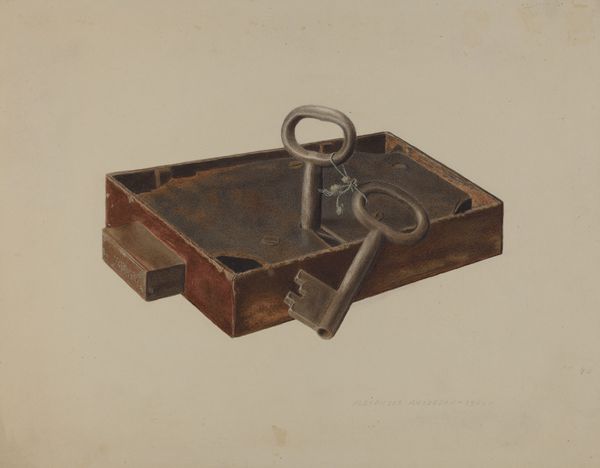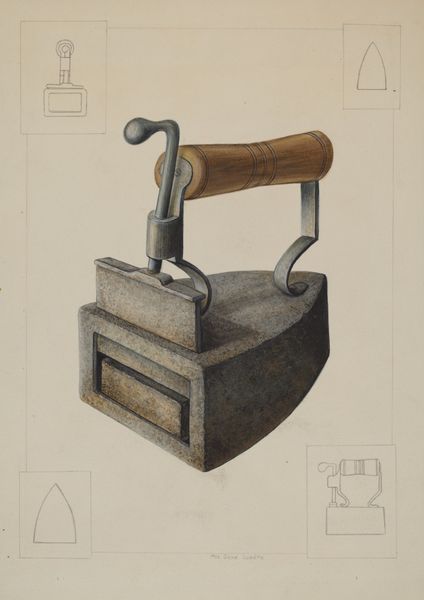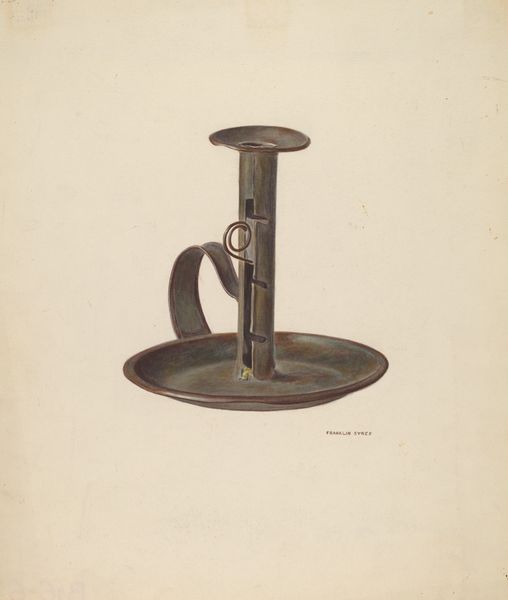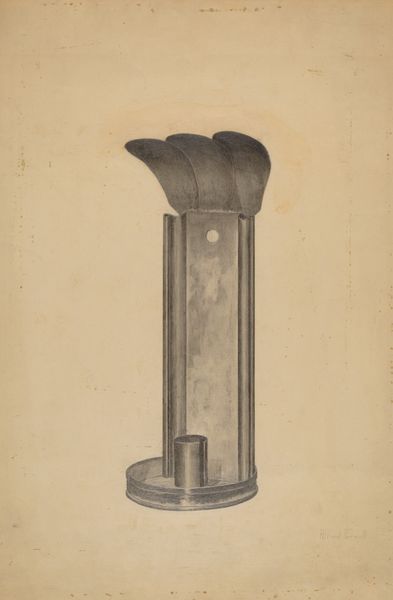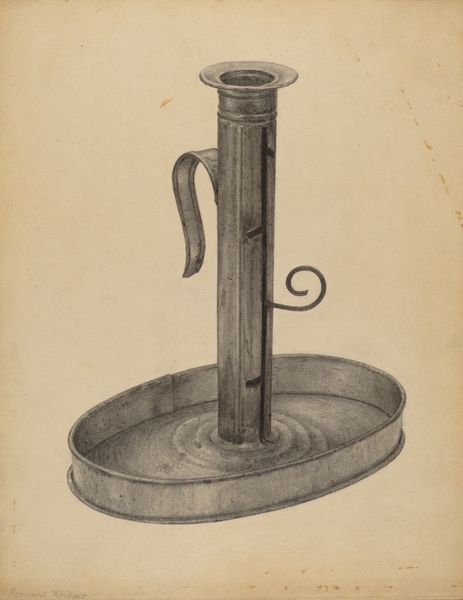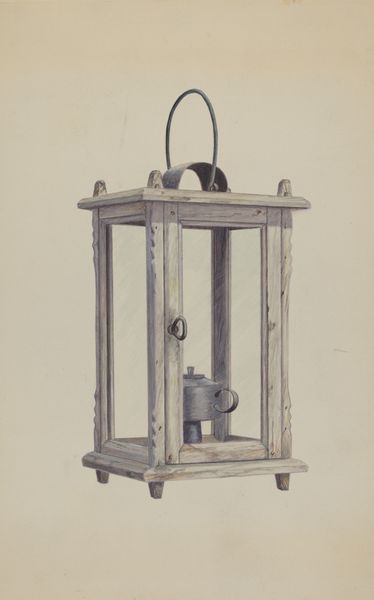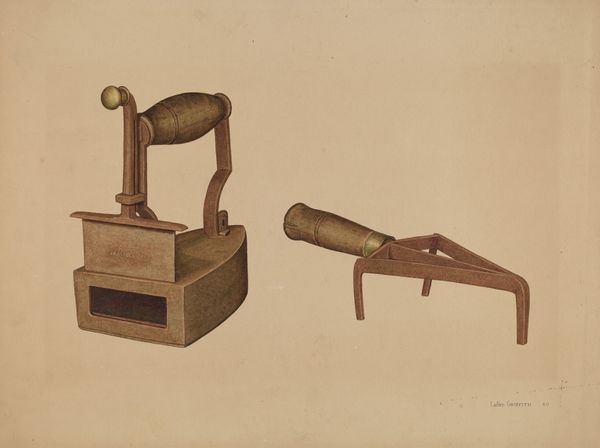
drawing, watercolor, graphite
#
drawing
#
charcoal drawing
#
watercolor
#
pencil drawing
#
graphite
#
graphite
#
watercolor
#
realism
Dimensions: overall: 26 x 33.4 cm (10 1/4 x 13 1/8 in.)
Copyright: National Gallery of Art: CC0 1.0
Curator: Well, here we have Edward White’s “Economy Lamp,” created around 1937. It's a piece rendered using graphite, watercolor, and pencil—a study in the everyday. What are your initial thoughts? Editor: Stark, wouldn't you say? There's a utilitarian severity in its rendering. The limited color palette further emphasizes this austerity. It feels almost like a statement on the scarcity of the Depression era. Curator: Precisely! The focus on a humble lamp underscores that theme of austerity. White’s choice of materials also speaks volumes. Graphite, watercolor, and pencil - accessible, inexpensive mediums suitable for documentation. It speaks to resourcefulness during a time of economic hardship. Editor: Absolutely, but there's also a fascinating social commentary at play. The name itself, "Economy Lamp," seems ironic when we consider the labor invested in meticulously depicting something mass-produced, possibly cheaply. Who had access to these lamps? Whose labor made them possible? Curator: Good point. Think of the labor processes implied, from the manufacturing of the metal components to the mass production of these lamps for working class homes and even the very production of art amidst these circumstances. There's a chain of human effort inherent within this artwork’s materiality. Editor: The social dimensions are unavoidable here. Who is this artwork for? I’m particularly struck by the object itself, this lamp which served the basic need for illumination and aided countless people through difficult times. Does White, I wonder, intend a portrait of silent perseverance? Curator: A possibility to consider, certainly, though, perhaps it could be interpreted more plainly as an aesthetic study of an object—something unglamorous transformed through technique and process. The rendering is undeniably detailed, emphasizing form and material quality through subtle variations in shading. Editor: But isn't it always both? The choice itself to depict something so quotidian in such detail demands we look closer at the world implied around it. It opens dialogues on gender roles too—women typically tasked with maintaining the home—recasts this ‘simple’ lamp as profoundly evocative, imbued with unspoken narratives. Curator: Ultimately, though, it presents us with both: the historical context and the objective fact of artistic production, reflecting both scarcity and meticulous rendering in one still image. Editor: Indeed. It reminds us that even in times of hardship, people find light—sometimes literally, and sometimes through acts of quiet resistance, such as Edward White's simple and thought-provoking sketch of a lamp.
Comments
No comments
Be the first to comment and join the conversation on the ultimate creative platform.
